How to Best Understand Your Refrigerated Transport Options
Executive Summary
- Refrigeration transport options and climate-controlled storage includes trucking services, reefer trucks, reefer trailers, refrigerated vans, refrigerated trucks, or reefer units.
- Refrigerated storage differs from frozen storage.
- Commonly found is a refrigeration container or refrigerated containers.
- Besides, there is vacuum drying, liquid nitrogen container, dry ice, and air cargo.
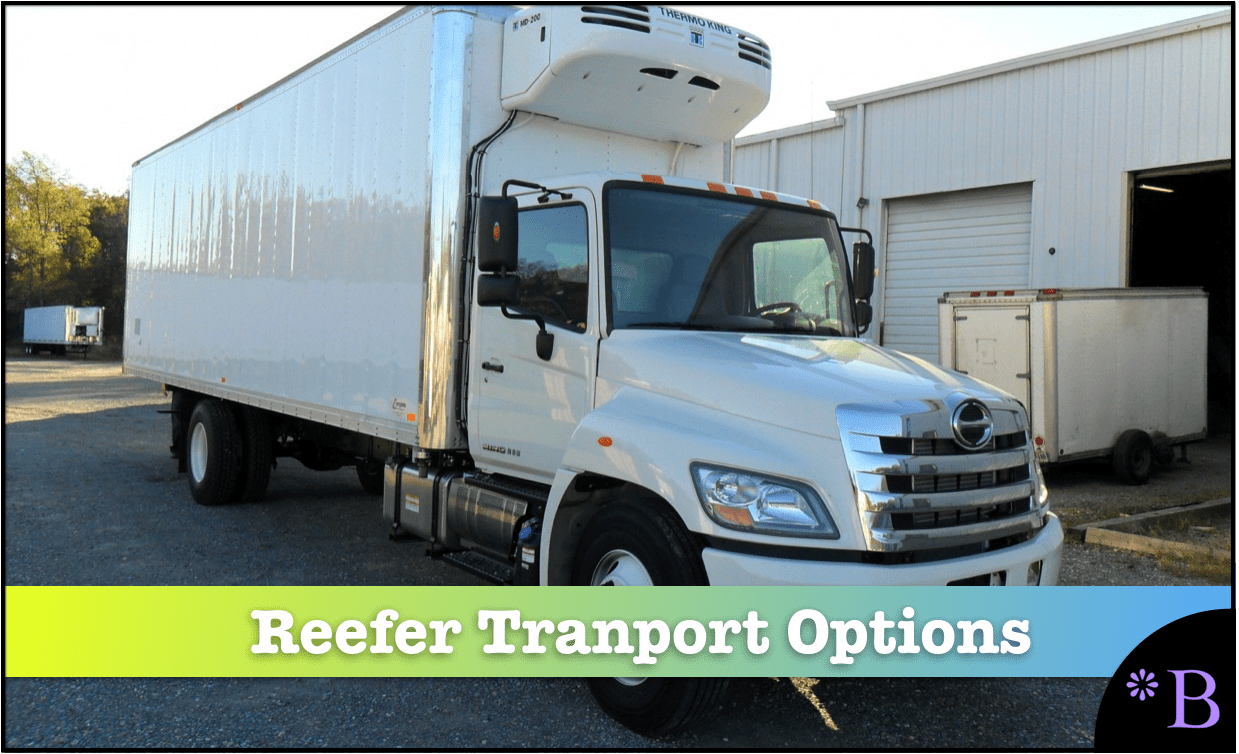
Introduction
Refrigerated transport and refrigerated trucks are broken into several divisions or dimensions. One is the type of equipment used. Another is how refrigerated transport is part of a larger climate-controlled storage network, and yet another is trucking versus rail and ocean refrigerated transport.
In this article, we will define terms reefer trailer, refrigerated van, etc..
A Reefer Truck, Reefer Van, Reefer Trailer, Refrigerated Van, Refrigerated Truck or Refrigerator Truck
The terms reefer truck, reefer van, reefer trailer, refrigerated van, refrigerated truck, or refrigerator truck are all terms for refrigerated transport. This is an insulated container with a refrigerating unit attached. The significant difference between these terms is that a reefer van or refrigerated van is a smaller cargo van for short transits. In contrast, reefer trailer, reefer truck, refrigerator truck, and refrigerated truck are used to describe a large truck designed for longer-range refrigerated transport.
The Beginnings of Refrigerated Transport
Refrigerated transport goes back to the 1930s.
Refrigeration in businesses in the US started in the 1910s, and homes and transport also begin around this time as Freon, an essential chemical in early refrigeration, was introduced in the 1920s. When refrigeration was first developed, it was called “mechanical refrigeration” as a contrast to the more common form of refrigeration which was cut ice.
This is one of the few videos available online that provides refrigerated transport history, which began with ice before refrigeration units were available. Refrigeration completely changing food consumption patterns and how far perishables could be shipped and still be sold. The market for perishables is unrecognizable today from its pre-refrigeration transport period.
Temperature Control for Refrigeration Units
Temperature-controlled transportation goes back far further than this as the ice was used instead of a compressor-based refrigeration system.
What is today serviced by refrigerated trucks, refrigerated containers, and temperature-controlled storage was in the past supported by ice trucks and “ice houses.” (there was little to no long-distance temperature-controlled transport and no real international transport that we take for granted today) Although, ice houses could only place bear cold freshwater lakes or areas with snow outside of the winter. Therefore, temperature-controlled cargo distribution was very much limited to cold weather regions and the winter months.
A refrigerated truck is insulated and has a refrigeration unit. There are refrigerated trucking companies that only have refrigerated trucks and other refrigerated trucking companies that offer refrigerated trucks and non-refrigerated trucks.
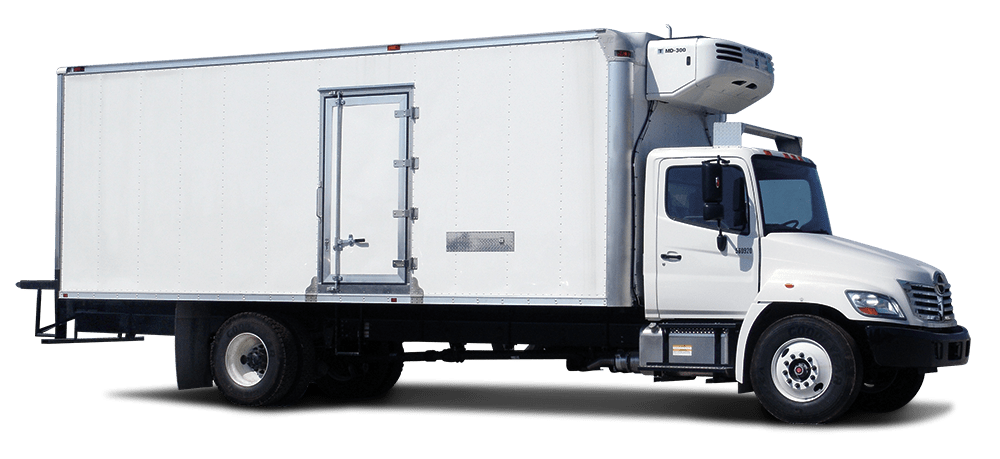
The Refrigerated Truck Refrigeration Unit or Reefer Units
The refrigeration unit or reefer unit controls the container’s temperature and hangs out on top of the cab.
This is a compressor that is powered by the power generated from the truck or a container. The entire technology is the a.) generator (to run when the truck’s main engine is not active, b.) the compressor, and then c.) the insulated box.
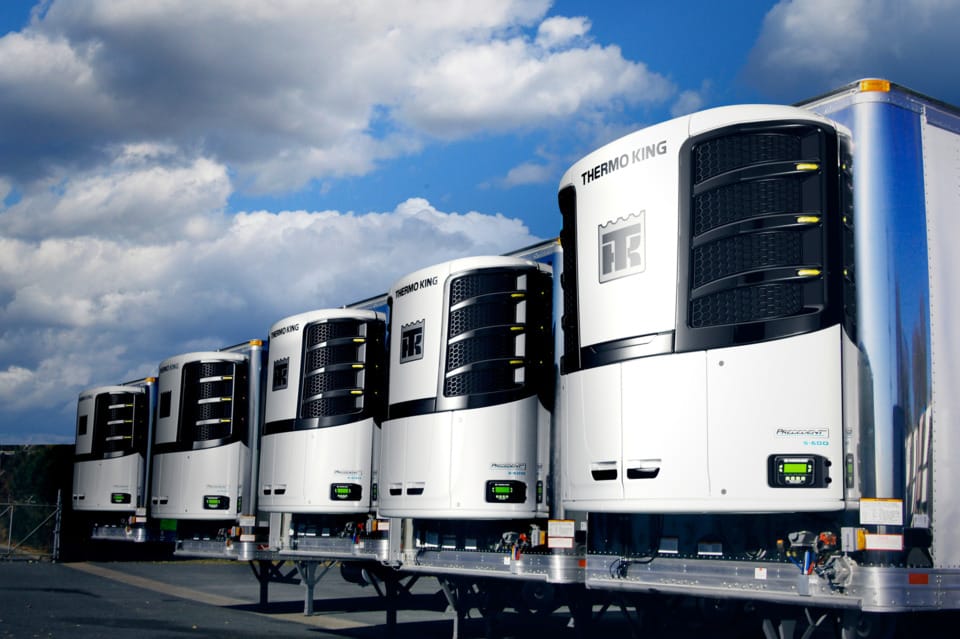
A larger refrigeration unit or reefer unit has its internal battery; refrigeration unit manufacturers are increasingly selling their reefer units with solar panels.
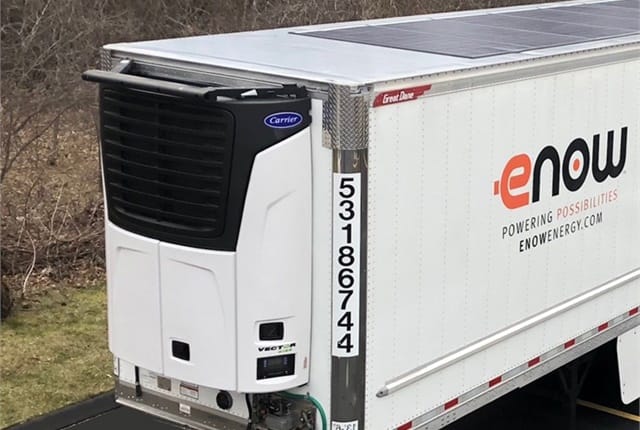
These solar panels are not designed to be the primary power source for the compressor but instead serve only to maintain the container’s temperature level when the truck is not running and not providing power to the reefer unit.
Refrigerated Storage Versus Frozen Storage
Frozen storage uses very similar equipment to refrigerated transport, but the temperature is turned down with frozen storage. Refrigerated transport means that the temperature is kept just a few degrees above the freezing point of water. Perishable foods are maintained at a range between 37 to 41 degrees Fahrenheit. Bringing the temperature below this would damage or destroy many foods. Frozen storage brings the temperature down to the right, around 34 degrees Fahrenheit.

Frozen storage is a significant percentage of the overall refrigerated transport market. And the same equipment can carry either refrigerated or frozen products. It is simply a matter of setting the refrigerated unit to match the product. Refrigerated freight cars provide the ability to transport frozen storage products rather than simply low temperatures, as was ice refrigeration.
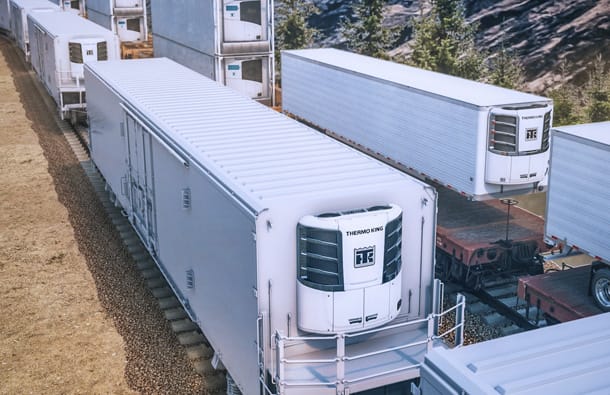
Refrigerated Container or Refrigerator Containers
A refrigerated container or refrigerator containers are used for ship or rail-based refrigerated transport. These refrigerated containers are powered by port railyard, rail, and ship power lines. Refrigerator containers are transported and powered this way for weeks on international ocean transits. But a refrigerated container can also be stored for an extended period without being connected to any external power source. This is because refrigerated containers have their diesel generator power the refrigeration unit when connections to external power are not available or not convenient.
Because refrigerator containers must be stackable, the refrigeration unit is built flush into the rear panel (the side opposite the doors) on the container.
Refrigerated Transport Products
Refrigerated transport is concentrated in foods and medical and pharmaceutical products as well as blood. The most common use for a refrigerated truck is for the transportation of food.
Climate-Controlled Storage
Refrigerated transport works in concert with a climate-controlled storage network. That is, the initial production of a product is placed into climate-controlled storage before the reefer-van or reefer truck picks up the freight, and it is, of course, taken to a location that also has climate-controlled storage. Sometimes this controlled climate storage is a distribution center, and other times, it is a retail location such as a grocery store with climate-controlled storage.
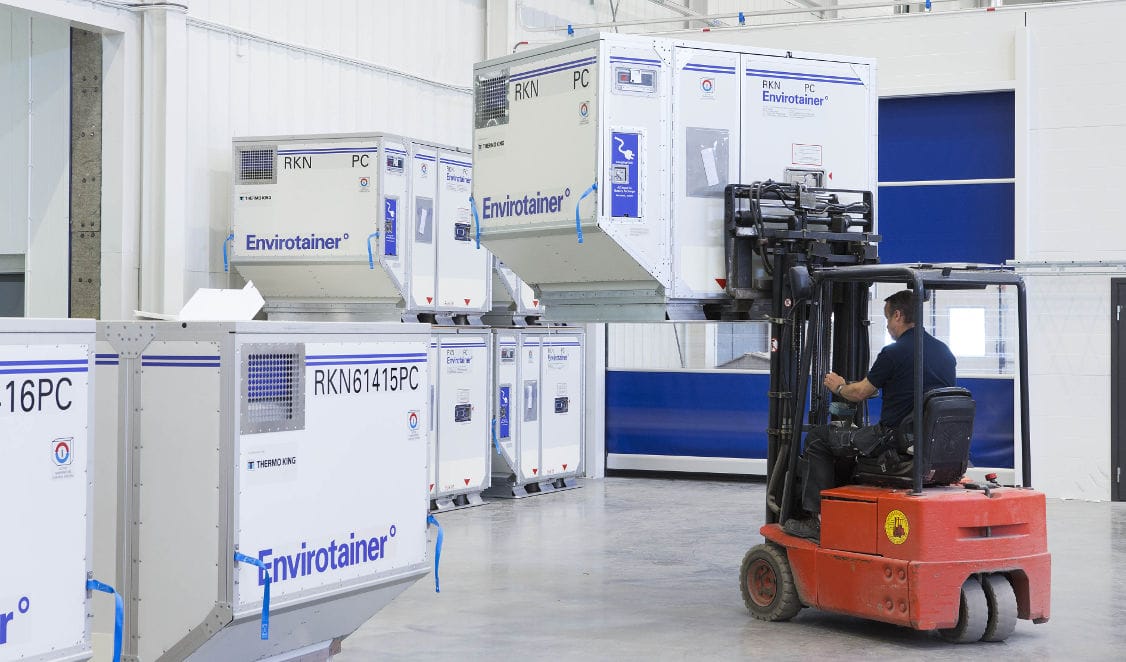
The Envirotainer is a temperature-controlled container that fits into the airplane.
Vacuum Drying, Liquid Nitrogen Container, and Dry Ice and Air Cargo
Refrigerated transport is by far the most common type of temperature-controlled transport. But not for air cargo. First air cargo moves at great speed, so the temperature must be maintained for a far lower time duration. But to keep with the low weight limits of airplanes.
There are several other options in the market for air cargo. One is vacuum drying. This is where the product has its moisture removed and is then vacuum packed. Vacuum drying removes the need for maintaining a low temperature, but vacuum drying also considerably deforms and alters the product. For this reason, vacuum drying has minimal applications.

Liquid nitrogen containers are a type of “dry ice.” Liquid nitrogen container or dry ice has a lower temperature than normal ice or water ice at 109 degrees Fahrenheit. A liquid nitrogen container and or dry ice are too expensive to compete with refrigerated transport but are often used with individually packaged items. Liquid nitrogen containers and dry ice are typically used only when conventional refrigeration is unavailable or impractical.
In this way, liquid nitrogen containers and dry ice can be considered a niche method of temperature-controlled transport.
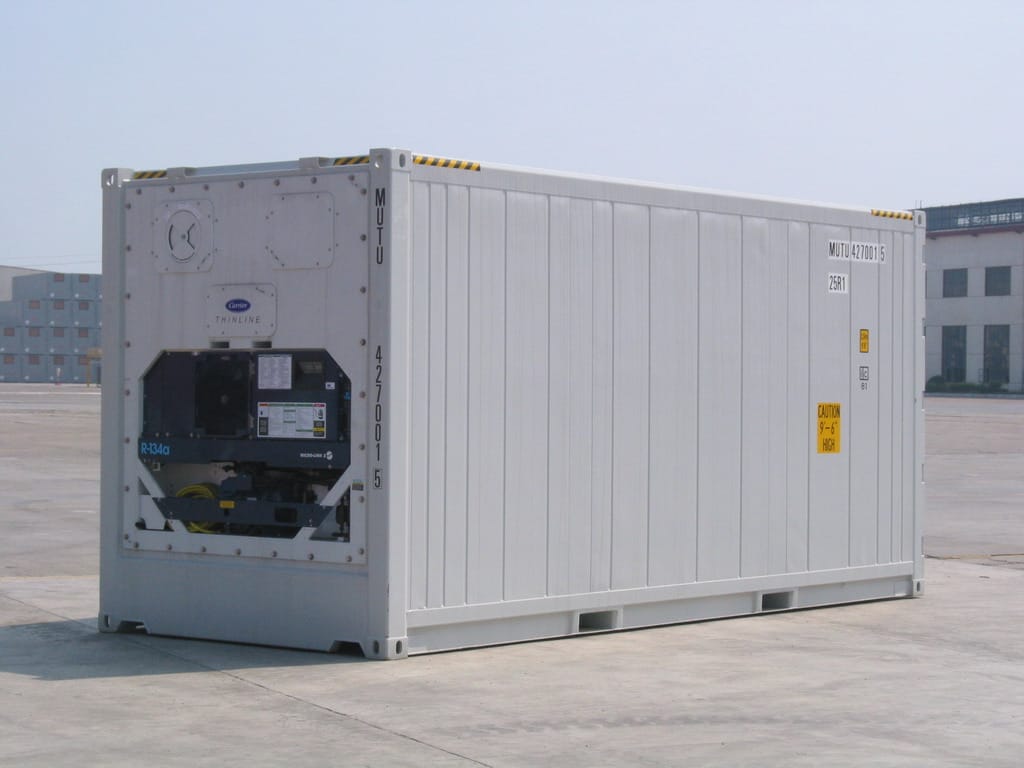
Refrigerated Ocean Containers
Although most perishables that go over the ocean are transported by air, there are also refrigerated ocean containers.
The Impact of Refrigerated Transport and Refrigerated Food
Food companies were the primary innovators in refrigerated transport. This was both with ice-based transport and refrigerated transport. As far back as the mid to late 1800’s fruits, vegetables and meats were transported on a large scale by insulated ice bunker (an ice compartment) rail cars, with beef packing being the predominant driver of ice-based rail car transport.

The largest impact of refrigerated transport has been the transformation of diet, with foods being shipped to locations where they had previously never been carried. This turned what was once seasonal and hard to find foods to become much more plentiful. It has also meant a widening of the distance between food production and food consumption. While the average number of miles foods now travel before purchase varies quite a bit, most produce is grown 1500 miles from where it is purchased.
Interestingly, at one point, the US had a very efficient rail distribution-based ice rail car transportation system. Still, the decline of the railroads meant the movement of temperature-controlled cargos to trucks. One recent development has been the movement of some long-haul refrigerated foot traffic back onto the rails.
Refrigeration technology played an important role in the history of one of the largest trucking companies in the US. This video tells the story.
The Refrigerated Transport as a Topic
Refrigerated transport has remarkably little media coverage.
Refrigerated units and refrigerated transport are also known as temperature-controlled transport. The term temperature-controlled transport may have never become popular because, in all cases, temperature-controlled transport is refrigerated. Although on the other hand, the term climate-controlled storage is the standard term for refrigerated storage.
This is a good video on the design of a large reefer trailer.
Conclusion
Understanding the basics of refrigerated units and refrigeration transport can take one a long way in knowing the options available in the transportation services and the options available to shippers.
Today’s refrigerated transport is effortless and inexpensive compared to recent history and has opened markets for year-round perishables that did not exist before refrigerated transportation.
References
San Joaquin History.com
*https://www.longbeachice.com/7-practical-lesser-known-uses-dry-ice/
American Rails.com
https://ucanr.edu/datastoreFiles/608-319.pdf